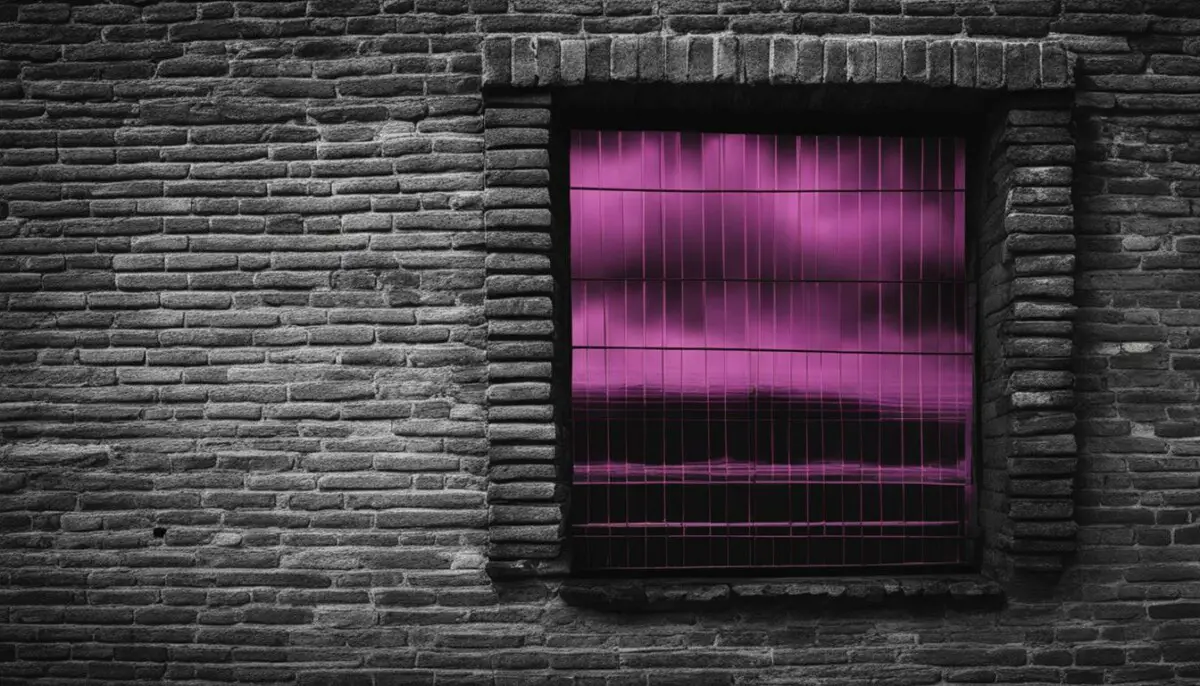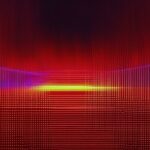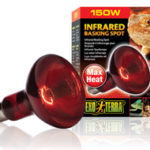Last Updated on 6 months by Francis
If you’re wondering whether infrared cameras can see through walls, you’re not alone. Many people believe that these cameras have the ability to penetrate walls and reveal hidden objects or people. However, the truth is a bit more complicated than that. In this section, we’ll take a closer look at infrared cameras and thermal imaging technology to determine their capabilities in wall penetration.
Infrared cameras are incredibly useful tools that allow us to see differences in temperature. They work by detecting infrared radiation, which is emitted by all objects that have a temperature above absolute zero. This radiation is then converted into an image that displays temperature variations as different colors or shades of gray.
While infrared cameras can detect temperature variations through walls, they cannot see through them in the way that many people believe. The ability of infrared cameras to penetrate walls depends on various factors, including the material composition of the wall, its thickness, and temperature gradients.
Contents
Key Takeaways:
- Infrared cameras can detect temperature variations through walls, but cannot see through walls in the way that many people believe.
- The effectiveness of infrared cameras in penetrating walls depends on a variety of factors, including wall composition, thickness, and temperature gradients.
- Thermal imaging technology allows us to detect differences in temperature, which can be useful in a wide range of applications beyond wall inspection.
- Advancements in infrared camera technology have led to improved wall penetration capabilities, making them a valuable tool in various industries.
- Understanding the limitations and practical considerations of using infrared cameras is essential in utilizing them for wall inspection purposes.
Understanding Infrared Cameras and Thermal Imaging

If you’re curious about the capabilities of infrared cameras and their ability to see through walls, it’s crucial to first understand thermal imaging technology. Infrared radiation, which is invisible to the naked eye, is emitted by all objects with a temperature above absolute zero. Thermal imaging cameras detect this radiation and use it to create visual representations of temperature differences.
Thermal imaging technology works by utilizing sensors that can detect infrared radiation. These sensors are similar to those found in digital cameras, but instead of capturing visible light, they capture infrared radiation. The camera then processes this information to create an image that represents temperature variations in the scene being observed.
It’s important to note that the accuracy of the thermal images produced by these cameras is dependent on the quality of the sensors and the image processing software. As technology continues to advance, infrared cameras are becoming more precise and are able to capture more detailed thermal images.
Infrared cameras are not X-ray machines, and they cannot see through all materials. However, they are highly effective in detecting differences in temperature, which can be useful in many applications beyond wall inspection.
While thermal imaging technology is most commonly associated with wall penetration, it has many other applications. For example, it can be used in building inspections to detect moisture and insulation issues, as well as to identify electrical hotspots that could be potential fire hazards. In security settings, it can also be used to detect hidden objects that are otherwise invisible to the naked eye.
Overall, while thermal imaging technology may not provide a complete view of what lies behind a wall, it is a valuable tool that can be used to detect temperature differences and identify potential issues in various industries.
Applications of Thermal Imaging Beyond Wall Inspection

Thermal imaging technology has proven to be a valuable tool in various industries beyond wall inspection. Let’s explore some of its applications:
Building Inspections for Moisture Detection
Thermal imaging cameras are frequently used in building inspections to detect moisture. By detecting temperature differences in walls, floors, and ceilings, thermal imaging can identify areas with potential moisture issues, which can lead to mold growth, deteriorating insulation, and structural damage. Addressing these issues early on can save property owners costly repairs in the long run.
Electrical Inspections for Identifying Issues
Thermal imaging cameras can detect electrical issues, which are often invisible to the naked eye. They can identify overloaded circuits, loose connections, and damaged components, preventing costly downtime and electrical fires. Electrical inspections with thermal imaging cameras also improve safety for maintenance teams by identifying potential hazards before they become critical issues.
Hidden Objects Detection in Security Settings
Thermal imaging technology is rapidly advancing as a security tool, providing another layer of protection in surveillance systems. Unlike traditional surveillance cameras that rely on light, thermal imaging cameras can detect heat signatures, allowing them to detect intruders even in complete darkness. They can also be used for perimeter and border surveillance, identifying individuals who may be trying to avoid detection by hiding or camouflaging themselves.
The Limits of Infrared Cameras
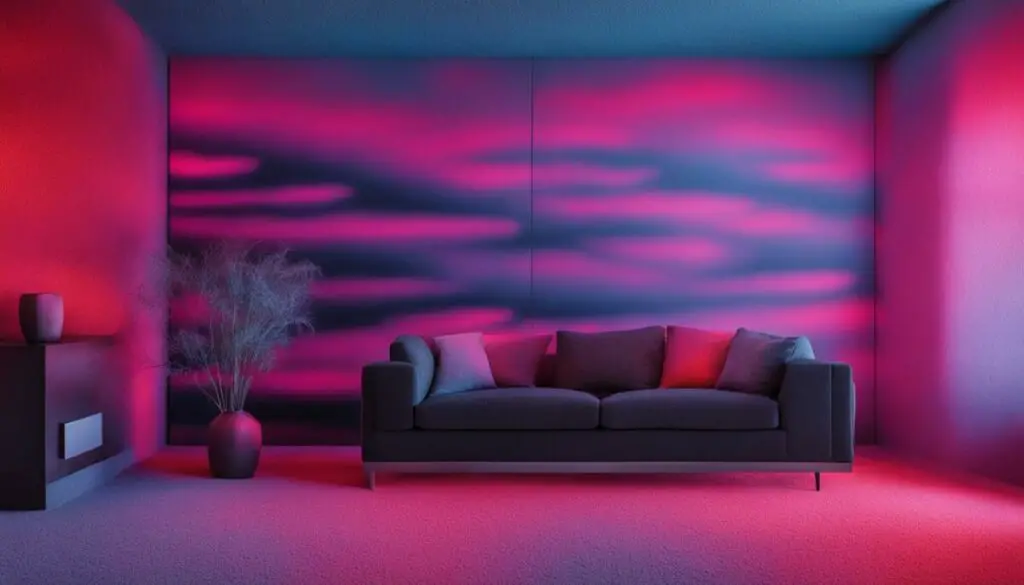
While infrared cameras have the ability to detect temperature variations through walls, their ability to “see” through walls is limited.
The effectiveness of infrared cameras in wall penetration depends on several factors, including:
| Factors | Impact on Wall Penetration |
|---|---|
| Wall Composition | Different materials affect the ability of infrared cameras to penetrate walls. For example, thicker and denser materials, such as concrete, metal, and bricks, limit penetration compared to materials like drywall and wood. |
| Wall Thickness | The thicker the wall, the more difficult it is for infrared cameras to penetrate it. Thicker walls also reduce the resolution of the thermal image captured by the camera. |
| Temperature Gradients | Large temperature differences between the interior and exterior of walls can impact the effectiveness of infrared cameras in detecting temperature variations. This is because infrared cameras can only capture differences in temperature, and not absolute temperatures. |
Non-destructive testing is a common use of infrared cameras for wall inspection. However, it is important to note that infrared cameras are not a foolproof method for detecting hidden objects or structural issues.
“Infrared technology can be an effective tool for non-invasive inspection of structures, but it is not a guaranteed solution for detecting every issue or object.”
It is recommended to use infrared cameras in combination with other inspection methods for a more comprehensive analysis of wall conditions.
Factors Affecting Wall Penetration
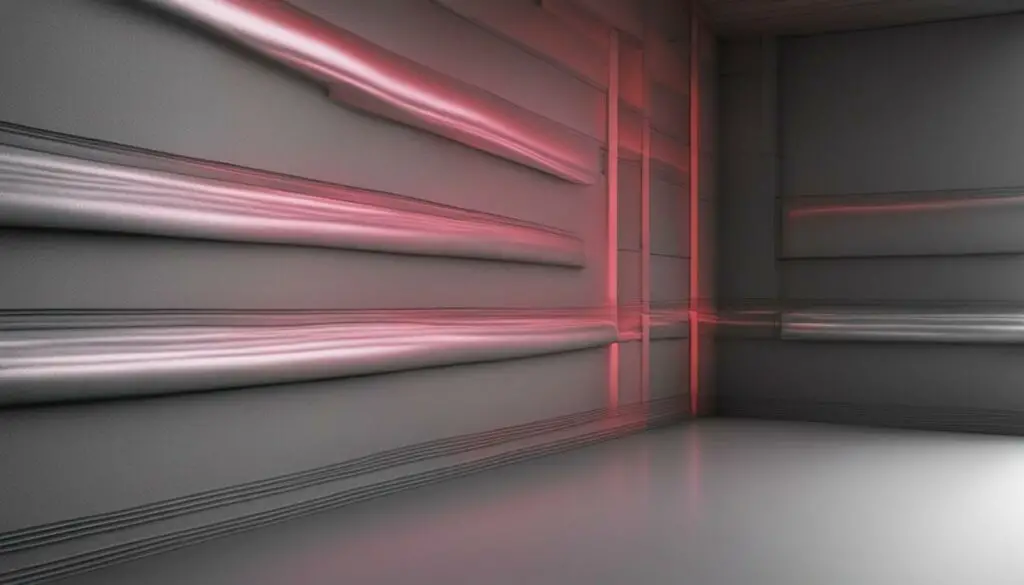
The ability of infrared cameras to see through walls depends on several factors, including the wall’s material composition, thickness, and temperature gradients. Understanding how these elements impact wall penetration can help properly assess the effectiveness of infrared cameras during wall inspection.
Material Composition
The composition of the wall affects its ability to absorb and reflect infrared radiation, which can limit the camera’s penetration capabilities. For example, materials like brick and concrete absorb and retain heat, making it more difficult for infrared radiation to pass through them. On the other hand, materials such as wood and drywall reflect less heat, allowing for better wall penetration.
Thickness
The thickness of a wall also plays a significant role in infrared camera penetration. Thicker walls may absorb more heat, making it more difficult for the radiation to pass through. In contrast, thinner walls may allow for more effective wall penetration.
Temperature Gradients
Temperature gradients across a wall surface can impact the effectiveness of infrared cameras in penetrating the wall. A consistent temperature across the wall provides the best results for wall inspection. Uneven temperatures can create shadows and reflections that obscure the camera’s view, reducing its penetration capabilities.
Table: Different types of wall materials and their impact on wall penetration.
| Wall Material | Penetration Capability |
|---|---|
| Brick | Low |
| Concrete | Low |
| Wood | High |
| Drywall | High |
Understanding the factors that impact infrared camera penetration allows for a more accurate assessment of their effectiveness during wall inspection. While some materials and wall thicknesses may limit the camera’s penetration capabilities, newer infrared camera models and image processing algorithms are improving wall penetration capabilities for more effective non-destructive testing.
Achieving Better Wall Penetration with Advanced Techniques

Thanks to advancements in infrared camera technology, the ability to see through walls has greatly improved. Newer models of infrared cameras have higher resolutions and can capture more detailed images, enhancing their wall penetration capabilities. Additionally, image processing algorithms have become more advanced, allowing for better image quality and analysis.
Infrared camera technology advancements have also led to the development of specialized lenses. For example, wide-angle lenses enable a larger field of view, while telephoto lenses can zoom in on specific areas, making it easier to detect temperature variations.
| Advanced Technique | Description |
|---|---|
| Multi-spectral imaging | Uses multiple wavelengths of light to capture different types of images, such as thermal and visible light images, which can be combined to create a more detailed and accurate image. |
| Thermography software | Allows for the analysis of temperature patterns and trends, further enhancing the detection of subtle temperature variations in walls. |
| Active thermography | Uses external heat sources, such as flash lamps or lasers, to stimulate heat flow in materials, making it easier to detect defects or hidden objects within walls. |
It is important to note that while these advanced techniques have improved the ability of infrared cameras to penetrate walls, there are still limitations to their effectiveness. Walls with thicker or denser materials, such as concrete or steel, can still pose challenges to infrared cameras. Temperature gradients within walls can also affect the accuracy of thermal imaging.
The Truth Behind “Seeing Through Walls”
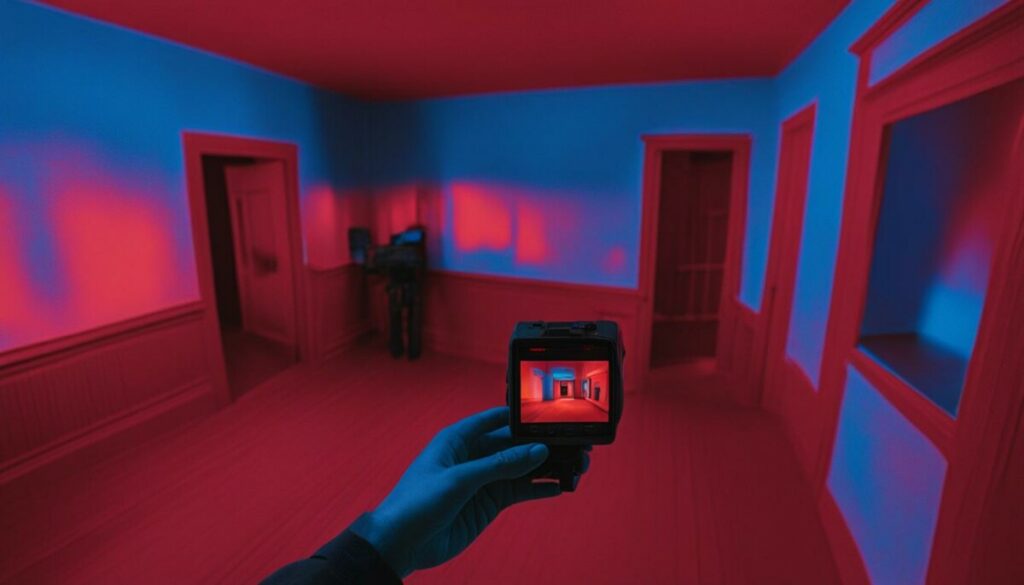
There are many myths and misconceptions surrounding the ability of infrared cameras to see through walls. Unfortunately, many of these myths are perpetuated by pop culture and sensationalist media, leading to confusion and misunderstandings about the capabilities of thermal imaging technology.
“Can infrared cameras see through walls?”
The short answer is no. While infrared cameras can detect temperature variations through walls, they do not have x-ray vision that allows them to see through solid materials.
The myth of infrared cameras seeing through walls likely originates from their ability to detect heat signatures. In movies and TV shows, this is often portrayed as a way to “see” through walls and identify people or objects on the other side. However, this is not an accurate representation of how infrared cameras actually work.
Instead, infrared cameras use thermal imaging technology to capture and display differences in temperature. This can be useful in identifying potential issues within walls, such as areas with insufficient insulation or moisture damage. However, it does not allow for a clear view of what is on the other side of the wall.
It is important to understand the limitations of infrared cameras when it comes to wall penetration and avoid buying into the hype of their supposed abilities. By doing so, we can better utilize thermal imaging technology for its real-world applications and make informed decisions about its use in various industries.
The Role of Myths and Misconceptions
So why do these myths and misconceptions persist? One reason may be the prevalence of Hollywood portrayals that exaggerate the capabilities of infrared cameras. Another factor could be a lack of education and understanding about the science behind thermal imaging technology. Without accurate information, it is easy to fall prey to sensationalist claims and unrealistic expectations.
Whatever the reason, it is important to rely on reliable sources and accurate information when it comes to the capabilities of infrared cameras. By doing so, we can ensure that we are making informed decisions and using thermal imaging technology to its fullest potential.
Practical Considerations for Wall Inspection
When it comes to wall inspection, there are several factors to consider before deciding on the best approach. Invasive methods, such as cutting through walls, can be thorough but also time-consuming and costly. In contrast, non-destructive testing methods, like infrared cameras, can provide effective inspections without damaging the structure, but they do have limitations.
Wall Inspection
One of the advantages of using infrared cameras for wall inspections is that they can quickly detect temperature patterns, which can indicate leaks or other issues not visible to the naked eye. This can be especially useful for buildings with hard-to-reach areas or for those with historical significance in which invasive methods may not be appropriate.
Building Maintenance
Regular wall inspections are an important part of building maintenance, as they can help identify potential problems before they become serious and costly to fix. Infrared cameras can be a valuable tool in this regard, as they offer a non-destructive and efficient approach to wall inspections. This can save building owners time and money in the long run, as costly repairs can be avoided by identifying issues early on.
Invasive Methods
While infrared cameras can be a practical and cost-effective solution for wall inspections, they do have their limitations. In some cases, invasive methods may be necessary to get a more detailed and accurate assessment of the structure. This can be particularly true for buildings with complex systems or those that have undergone significant renovations.
Cost-Efficiency
Another consideration when choosing a wall inspection method is cost-efficiency. Invasive methods can be expensive and time-consuming, while non-destructive methods like infrared cameras are often more cost-effective and efficient. However, it is important to consider the scope of the inspection and the potential need for more in-depth analysis when deciding on the best approach.
“Regular wall inspections are an important part of building maintenance, as they can help identify potential problems before they become serious and costly to fix.”
Ultimately, the best approach for wall inspection will depend on a variety of factors, including the building’s construction, the scope of the inspection, and the available budget. Infrared cameras can be a valuable tool in many cases, offering a non-invasive and cost-effective solution for identifying potential issues. However, it is important to consider the limitations and practical considerations before deciding on the best approach.
Conclusion
In conclusion, while infrared cameras have become popular for wall inspection, they are not capable of seeing through walls as commonly believed. Instead, they are designed to detect temperature variations on the surface of walls, indicating potential issues inside the walls.
Factors such as wall composition, thickness, and temperature can affect the ability of infrared cameras to penetrate through walls and detect internal issues accurately. Therefore, it is essential to consider these factors and use infrared cameras in conjunction with other invasive methods as necessary.
Despite their limitations, infrared cameras are an essential tool in various industries, including building inspections, electrical inspections, and security settings. Advancements in infrared camera technology continue to improve their wall penetration capabilities, providing better accuracy and reliability.
In summary, infrared cameras are not x-ray machines that can “see” through walls, but they provide valuable information to detect potential issues non-invasively. Understanding their limitations and practical considerations is essential for achieving cost-efficient and accurate wall inspections.
FAQ
Can infrared cameras see through walls?
No, infrared cameras cannot see through walls. While they can detect temperature variations through walls, their ability to “see” through solid structures is limited.
How do infrared cameras work?
Infrared cameras utilize thermal imaging technology, which captures and displays differences in temperature. They detect infrared radiation emitted by objects and convert it into a visible image.
What are the applications of thermal imaging beyond wall inspection?
Thermal imaging has various applications, including building inspections for moisture detection, electrical inspections for issue identification, and hidden object detection in security settings.
What are the limits of infrared cameras?
While infrared cameras have impressive capabilities, they are limited in their ability to penetrate walls for non-destructive testing.
What factors affect wall penetration with infrared cameras?
Wall penetration with infrared cameras is influenced by factors such as the material composition of walls, their thickness, and temperature gradients.
Can infrared camera technology advancements improve wall penetration?
Yes, advancements in infrared camera technology, including newer models and image processing algorithms, enhance the ability to see through walls.
Do infrared cameras really “see” through walls?
No, infrared cameras do not actually see through walls. They detect temperature variations and display them, but they cannot provide a clear visual representation of what is on the other side of a wall.
Are infrared cameras a cost-effective option for wall inspection?
Yes, using infrared cameras for wall inspection can be cost-efficient compared to invasive methods. However, practical considerations should be taken into account.
What is the conclusion regarding infrared cameras and wall penetration?
In conclusion, while infrared cameras have the ability to detect temperature variations through walls, their ability to “see” through walls is limited. Factors such as wall composition, thickness, and temperature gradients affect their effectiveness. However, advancements in infrared camera technology continue to improve their wall penetration capabilities, making them a valuable tool in various industries.

